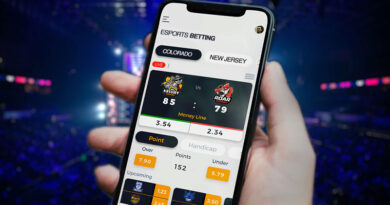How AI-driven contextual targeting helps advertisers beyond cookie deprecation
Sponsored by Seedtag • November 9, 2023 • 3 min read •
Ivy Liu
Brian Danzis, managing director, US, Seedtag
There’s an enduring cliche in sports: some teams play not to lose, whereas others genuinely play to win. The same could be said of how brands and agencies have approached contextual targeting.
As brands reach out to agencies to plan for life without cookies, agency teams have a pivotal opportunity to prove their strategic value and deepen client relationships. An increasing share of these deliberations revolves around contextual targeting, which is sometimes misconstrued as a secondary plan or a plan B. That is, contextual is still seen as a way not to lose.
However, contextual advertising should not be relegated to a fallback option occasioned by the diminishing utility of cookies. Instead, it is a potent tool capable of sculpting nuanced and intricate target audience frameworks. It enables advertisers to concentrate on customers’ passions, ethics and values while synchronizing these elements with a brand’s core principles. For successful agencies and brands, contextual is genuinely leveling up audience strategies.
Contextual has evolved beyond keywords and themes
When agency teams think of contextual, they often think of a glorified way to describe targeting genres of publications or keywords. However, contextual targeting has made significant technological leaps. With advancements in AI and machine learning, it is now possible to go well beyond keywords and themes to understand the nuanced meanings and sentiments of entire pages in their full semantic context.
Whereas old-school contextual targeting might view something as “an article that mentions dogs in a lifestyle publication,” today’s contextual technology can understand it as “an article providing advice for new dog owners about the most ethical ways to train difficult breeds.”
This enhanced view uncovers several actionable insights about the readers of that page and their mindsets (new owners, focus on ethics, etc.), which open up other avenues for contextual targets (home security, animal welfare, ethical brands, etc).
Contextual advertising identifies more opportunities to reach nuanced audiences
Armed with enhanced capabilities, contextual targeting offers agencies a slew of other significant advantages, particularly when compared to using off-the-shelf audience segments.
For example, agencies are realizing that interests move faster than audience segments, and contextual targeting is the best way to stay ahead of them. Contextual advertising unlocks the ability to go beyond standard demographics to delve deeper into variable reactions and perspectives on current topics. It allows brands to resonate with emerging trends and subjects like sustainability, even before a standardized audience taxonomy becomes commonplace and available for those themes.
Contextual also helps spot new inventory opportunities that traditional audience targeting overlooks. Many of these opportunities are lower cost and more efficient and thereby improve the overall economics of campaigns. Contextual helps agencies identify brand-compatible content across a broader and more diversified range of publications, broadening reach while keeping an eye on reducing acquisition costs.
Contextual is at the heart of a compliant, post-cookies targeting strategy
With privacy regulations and standards continuing to intensify, handling audience data — particularly personal identifiable information (PII) — comes with additional risk and complexity. Contextual targeting is free of such burdens. While all agencies will encourage brands to use some form of first-party data, contextual extends the value of what a brand already has without having to incur the cost and complexity of securely matching with other sets of PII.
Contextual advertising should be more than just a backup plan born out of fears of what will happen without cookies. The shift toward contextual targeting helps agencies better align with the deeper change underway in the industry — the move away from intrusive methods and toward those that are based on relevance and respect. This shift calls for a transformative approach where the emphasis evolves from merely grabbing the audience’s data and attention to creating a deep-rooted impression grounded in the contextual reality of the moment.
In this changing landscape, contextual targeting is how agencies play to win. Those who approach it as simply a way not to lose will fall behind those who dive in with both feet.
Sponsored by Seedtag
https://digiday.com/?p=525230


